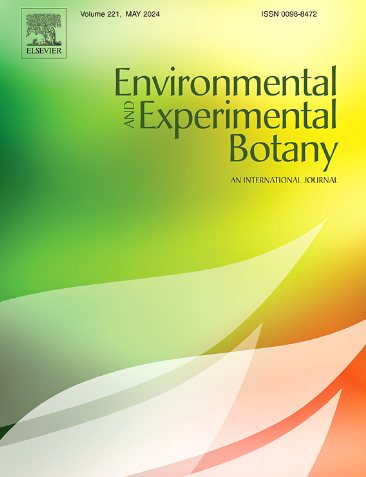Beyond red and blue: Unveiling the hidden action of green wavelengths on plant physiology, metabolisms and gene regulation in horticultural crops
IF 4.7
2区 生物学
Q2 ENVIRONMENTAL SCIENCES
引用次数: 0
Abstract
Light intensity, photoperiod and spectral composition drive many fundamental functions of plant life and interacts with other environmental parameters and cultivation factors in determining the crop performance. Indeed, in addition to providing energy to power photosynthesis, light imparts precise signals regulating plant growth, development, and metabolism in photomorphogenesis, through the different wavelengths, detected by specific photoreceptors also at very low fluence rate.
While the efficiency of blue and red wavelengths in the photosynthetic process and their role in photomorphogenesis, as well as their absorption spectra, have been long since demonstrated, green radiation was considered useless (if not even detrimental) for plants for a long time, because of the poor action spectrum of photosynthesis and the weak absorption and high reflection in plant tissues. It is known now that instead the green light sustains photosynthesis in the deeper leaf lamina and canopy layers and participate to several photomorphogenetic processes. However, its role in the complex scenario of plant responses to light environment is still unclear and results in literature are sometimes conflicting.
The aim of this review is to update the knowledge on the effects of green, as both monochromatic light and portion of multispectral radiation, on plant physiology, metabolism, and transcriptional regulation to the most recent advances, with a special focus on those underlying useful agronomic outputs in terms of plant growth and yield, and product quality in vegetable and herbaceous crops. Last findings on these aspects are summarised in order to determine if and how green light-mediated responses can contribute to boost the plant performance in greenhouse and controlled environment horticulture.
超越红色和蓝色:揭示绿色波长对植物生理、代谢和园艺作物基因调控的隐藏作用
光强、光周期和光谱组成驱动植物生命的许多基本功能,并与其他环境参数和栽培因子相互作用,决定作物的生产性能。事实上,除了为光合作用提供能量外,光还通过不同的波长,以非常低的通量被特定的光感受器检测到,传递精确的信号,调节植物的生长、发育和光形态发生中的代谢。虽然蓝色和红色波长在光合作用过程中的效率及其在光形态形成中的作用及其吸收光谱早已被证明,但由于光合作用的作用谱差,植物组织的吸收弱而反射高,因此长期以来,绿色辐射被认为对植物无用(甚至有害)。现在我们知道,绿光在更深的叶层和冠层中维持光合作用,并参与几个光形态形成过程。然而,其在植物对光环境复杂反应中的作用尚不清楚,文献结果有时相互矛盾。这篇综述的目的是更新关于绿色,作为单色光和多光谱辐射的一部分,对植物生理、代谢和转录调控的影响的最新进展,特别关注那些潜在的有用的农艺产出,在植物生长和产量方面,以及蔬菜和草本作物的产品质量。总结了这些方面的最新发现,以确定绿光介导的反应是否以及如何有助于提高温室和受控环境园艺中的植物性能。
本文章由计算机程序翻译,如有差异,请以英文原文为准。
求助全文
约1分钟内获得全文
求助全文
来源期刊

Environmental and Experimental Botany
环境科学-环境科学
CiteScore
9.30
自引率
5.30%
发文量
342
审稿时长
26 days
期刊介绍:
Environmental and Experimental Botany (EEB) publishes research papers on the physical, chemical, biological, molecular mechanisms and processes involved in the responses of plants to their environment.
In addition to research papers, the journal includes review articles. Submission is in agreement with the Editors-in-Chief.
The Journal also publishes special issues which are built by invited guest editors and are related to the main themes of EEB.
The areas covered by the Journal include:
(1) Responses of plants to heavy metals and pollutants
(2) Plant/water interactions (salinity, drought, flooding)
(3) Responses of plants to radiations ranging from UV-B to infrared
(4) Plant/atmosphere relations (ozone, CO2 , temperature)
(5) Global change impacts on plant ecophysiology
(6) Biotic interactions involving environmental factors.
 求助内容:
求助内容: 应助结果提醒方式:
应助结果提醒方式:


